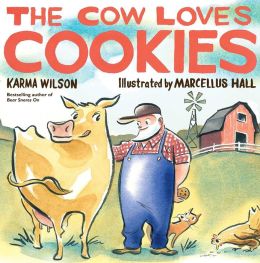Storytime Activity: The cubes shown here are made from 6” x 6” packing boxes. There are 6 sequences per cube, one for each side of the cube. You can see here a sequence of three for caterpillar to cocoon to butterfly and from pumpkin to carving a jack-o-lantern face, to the finished jack-o-lantern.To play, each family or small group gets three cubes as a set. A child rolls a cube and describes the picture. If the child is unable to respond, the adult helps the child reply or labels the picture with one word. Next, different people in the group look for other items in the sequence on the remaining two cubes. [For easier sequences use only two items, for harder sequences use four or more cubes.]
Early Learning Aside:
Talking about sequences, first, second, third, what happens next supports scientific and mathematical thinking with this cube activity. In this case we will be playing with sequences of three, three in a row. Talk together about the pictures and what pictures make sense to be in the sequence. Then line up the cubes in a row in order from left to right. [Note that a 1, 2, 3, sequence could be from less to more or more to less. It is still a sequence.]
Continue the game as another person rolls a cube; repeat the process.
Instructions to make and use the cubes: cubesseq






